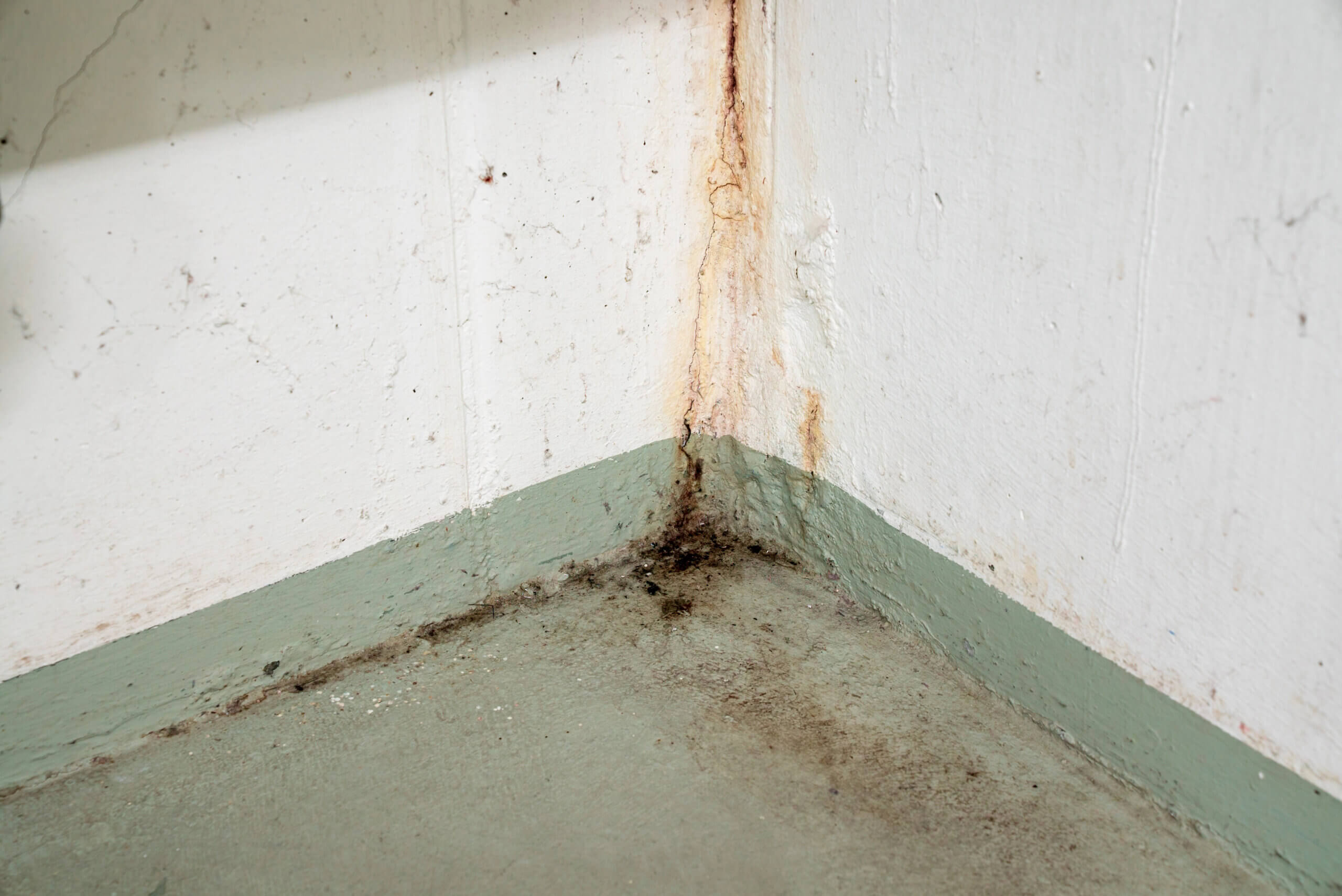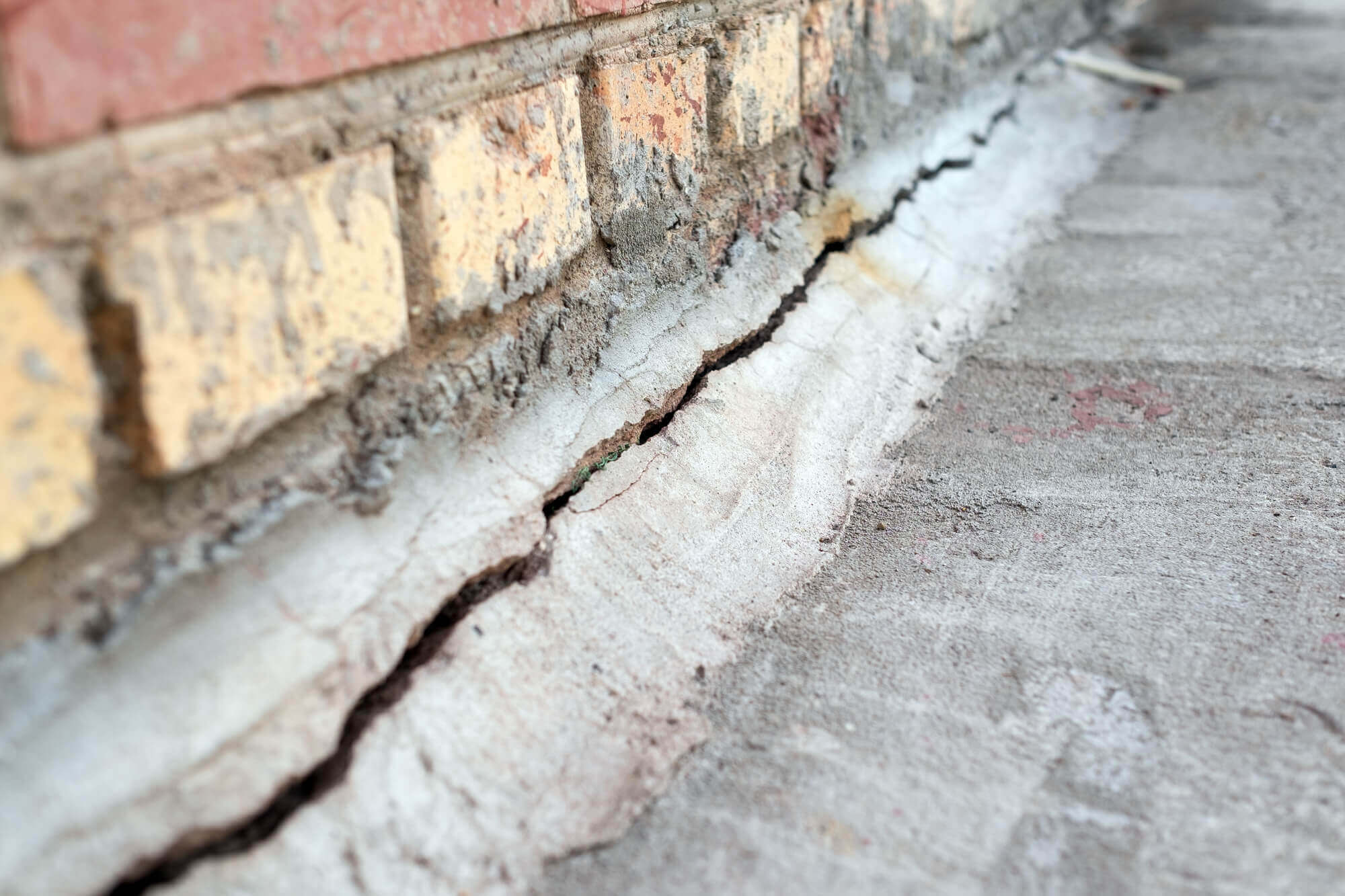Your home is your largest investment, and a strong foundation is essential for its stability. Being aware of the foundation repair signs that indicate foundation issues can save you from costly repairs down the road. Ignoring these signs can lead to more severe damage and a larger expense.
Common indicators include cracks in walls and floors or doors that stick when opened. These problems often develop over time and can worsen if not addressed promptly.
By knowing what to look for, you can take action early and protect your home. Understanding these signs will help you make informed decisions about repairs and ensure your property remains safe and sound.
What Are the Common Signs of Foundation Issues?
Identifying the signs of foundation issues early can save you from costly repairs. Several signs indicate problems that require attention. You should be aware of foundation cracks, uneven floors, and signs of settlement.
Identifying Foundation Cracks
Cracks in your foundation can signal serious problems. Look for cracks in the exterior walls, especially those that are wider than a quarter-inch. Horizontal cracks are often more concerning than vertical ones, indicating underlying issues with soil pressure.
Interior cracks are also important to watch. If you notice cracks in drywall or along the floor or ceiling, this may suggest foundation movement. Smaller hairline cracks are usually normal, but diagonal cracks or those accompanied by other signs should prompt further investigation.
Detecting Uneven Floors
Uneven floors can point to foundation issues. When you walk through your home, take notice if you feel slopes or dips. These changes can result from shifting soil beneath the foundation or problems with the structure itself.
Also, pay attention to how your doors and windows operate. If they stick or do not close properly, this may relate to unevenness in your floors, which can signal a foundation problem. Regularly check for these conditions to stay informed about your home’s stability.
Recognizing Foundation Settlement
Foundation settlement occurs when the soil beneath your home shifts and causes your foundation to sink. Common signs include cracks in walls, gaps between windows or doors and their frames, and cracks in the floor.
Another telltale sign is the presence of gaps around the exterior of your home. If you see daylight or have significant gaps, this should raise concerns. Not addressing this promptly can lead to major repairs down the line. If you notice any of these foundation repair signs, it is essential to get a professional evaluation.
What Causes Foundation Issues in a Home?
Foundation repair signs can arise from various factors affecting the ground and structure of your home. Understanding these causes is essential for preventing and addressing potential damage effectively.
Understanding Foundation Movement
Foundation movement is often caused by changes in the soil beneath your home. The ground can shift due to moisture changes, which makes soil expand or contract. When the soil dries out, it can shrink, leading to gaps. This movement creates stress on your foundation, causing cracks and misalignment.
In some areas, soil types like clay are more prone to expansion and contraction. This pressure from the surrounding soil puts a strain on your foundation, making monitoring your home for signs of movement important. Regular inspections can help detect early signs of trouble.
Factors Behind Foundation Upheaval
Several factors contribute to foundation upheaval. Heavy rainfall can saturate the ground, increasing pressure on the foundation. At the same time, drought can cause soil to shrink, resulting in gaps. Tree roots can also grow near the foundation, absorbing moisture and causing the soil to shift.
Errors during construction can lead to foundation issues. Insufficient drainage or poor grading can worsen the situation, allowing water to pool around your home. Proper drainage systems are essential to prevent excess pressure on your foundation, which can help maintain stability.
Environmental Impacts on Foundation Damage
Environmental conditions play a significant role in foundation health. Areas with extreme temperature changes often see more problems due to soil expansion and contraction. This fluctuation can lead to cracks and misalignment in foundations.
Additionally, nearby construction can impact your home’s foundation. Excavation or heavy equipment can disturb the soil, affecting stability. It’s essential to be aware of surrounding changes that might impact your home’s foundation and monitor any signs of potential damage regularly.
How Can I Prevent Foundation Problems?
Keeping your home’s foundation safe is essential for maintaining its value. Focus on proper drainage and regular maintenance to avoid future issues.
Proper Drainage Around the Foundation
Good drainage is vital for protecting the foundation of your home. Ensure that gutters are clean and direct water away from your home. Downspouts should extend at least six feet from the foundation.
Check the grading of the soil around your home. The ground should slope away from the foundation to prevent water buildup. You can add soil to low spots to improve drainage.
Consider installing a French drain if water pooling occurs. This system helps redirect water away, reducing pressure on your foundation. Regularly inspect the areas around your home for signs of moisture or standing water.
Maintaining a Stable Home’s Foundation
Regular maintenance is key to a stable foundation. Start by checking your home’s interior and exterior for cracks or gaps. Minor cracks can indicate shifting or settling and should not be ignored.
Control moisture levels in your basement to prevent problems. A dehumidifier can help manage humidity and keep the environment stable. Waterproofing your basement can also protect against leaks.
Keep vegetation away from the foundation. Tree roots can strain your foundation and absorb too much moisture from the soil. Trim trees and bushes regularly to keep them at a safe distance from your structure.
When Should I Seek Foundation Repair?
It’s important to know the foundation repair signs that indicate you might need foundation repair. Addressing these issues quickly can help prevent more serious problems down the line.
Warning Signs Indicating You Need Foundation Repair
You should look for specific foundation repair signs that could indicate a foundation problem. These include:
Cracks in Walls: If you notice diagonal or vertical cracks in your drywall, it may be due to foundation settling.
Uneven Floors: Floors that slope or are uneven can signal a shifting foundation. This affects stability throughout your home.
Stuck Windows and Doors: If your windows or doors are hard to open or shut, this could be a sign of a serious foundation problem.
Moisture Issues: Water damage in the basement or around the foundation may indicate an ongoing problem.
Crumbling Foundation: Any visible decay or crumbling in the foundation itself is a serious warning sign.
Recognizing these issues early helps you avoid larger repairs later.
Consequences of Delaying Foundation Repair
Ignoring foundation problems can lead to severe consequences. If you see any of the warning signs, acting quickly is vital. Here are some potential issues you might face:
Increased Repair Costs: The longer you wait, the more extensive the damage. This can lead to higher repair bills.
Structural Weakness: A weakened foundation can affect the entire structure of your home, leading to safety hazards.
Reduced Home Value: Homes with foundation issues often sell for less. Buyers may be wary of homes requiring significant repairs.
Health Risks: Foundation problems may allow moisture in, creating mold and other health concerns.
Addressing foundation issues promptly protects both your home’s value and your safety.
How to Address Slab Foundation Issues?
Taking care of slab foundation problems requires a clear understanding of effective repair methods and awareness of warning signs. Early detection and intervention can prevent more serious damage and costly repairs in the future.
Repair Techniques for Slab Foundation Cracks
When you notice cracks in your slab foundation, addressing them quickly is essential. Start by assessing the crack’s size and depth. Small cracks can often be sealed with epoxy or polyurethane. These materials help prevent water infiltration and further damage.
For more extensive cracks, a more thorough repair may be needed. You might require slab jacking, which involves injecting a grout mixture beneath the foundation to raise and level it. This technique is effective in addressing uneven strut issues.
Bear in mind that continual monitoring is necessary. Ensure that the cracks do not widen or expand over time. Regular check-ups will help you catch any significant changes early and address them before they escalate.
Spotting Slab Foundation Settlement
Recognizing signs of slab foundation settlement early can save you time and money. Look for visible signs such as uneven floors and cracks in walls or ceilings. These indicate that the foundation may be settling.
Another important sign is doors and windows that stick or do not close properly. This can point to misalignment caused by slab movement. Additionally, watch for gaps between walls and floors or between the foundation and exterior walls.
If you notice any of these foundation repair signs, consulting a professional is recommended. They can help determine if your foundation is settling and suggest appropriate solutions. Remember, acting promptly can prevent more severe problems from occurring down the road.
What to Expect During a Foundation Repair Process?
Foundation repair can be a complex process, but knowing what to expect can help you feel more prepared. This section covers the steps involved in repairing foundation damage, the costs you might face, and how to ensure the repair is successful.
Steps Involved in Repairing Foundation Damage
The foundation repair process begins with an initial inspection. A professional will assess your home for signs of damage, such as cracks in the walls or uneven floors. They will also determine the cause of the damage, which could range from soil movement to issues with drainage.
After the assessment, you may receive a detailed proposal for the repairs needed. The most common methods include underpinning, slab jacking, and wall anchors. Underpinning helps stabilize the foundation by extending it deeper into the ground. Slab jacking involves injecting material under the slab to lift it back to its original level.
Once repairs start, you will likely notice equipment around your home, such as hydraulic jacks and piers. These tools help the contractors fix the foundation properly. The repair might take a few days, depending on the severity of the damage.
Costs Associated with Foundation Repair
The costs for foundation repair can vary widely based on factors like the extent of damage and the repair methods used. On average, foundation repair can range from $2,000 to $7,000. Simple repairs may cost less, while extensive damage might lead to higher expenses.
Specific factors impacting costs include the type of repair needed, labor expenses, and your home’s location. For example, if your repair involves fixing a slab foundation, it may require different materials and techniques compared to a pier and beam foundation.
You should also consider additional costs related to any damage that might have occurred to your home during the repair. This could include repairing drywall or flooring that was affected during the process.
Ensuring a Successful Foundation Repair
To ensure a successful foundation repair, start with hiring a qualified contractor. Look for professionals with experience and positive reviews. A thorough inspection before the repairs helps identify all underlying issues.
You should stay informed throughout the repair process. Ask questions and understand each step as the work progresses. Monitor the repair area for any new signs of damage.
After the repairs are complete, it’s important to maintain your home’s foundation. Consider gradual landscaping changes to improve drainage away from your home. Keeping gutters clear and directing downspouts away can also help prevent future problems.


